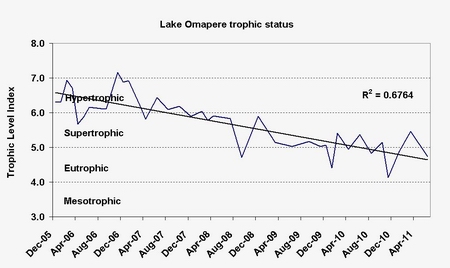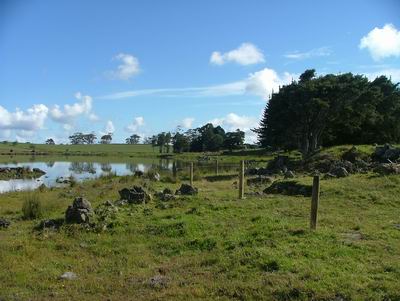Case study – Lake Ōmāpere
Lake Ōmāpere is located north of Kaikohe and feeds the Utakura River, which flows into the Hokianga Harbour. It is a large, shallow nutrient-rich lake which is prone to blooms of toxic algae that affect downstream water quality.
The council and the local community have been working closely for the last two decades to improve water quality in the lake.
Blue-green algae levels have generally remained low over the past year with algae reaching a record low of two algae cells per millilitre. However, a blue-green bloom appeared in late March this year and reached a concentration of 10,985 cells per ml. The bloom was short lived and was a likely result of environmental conditions.
Over the last year there have been positive signs that the lake is continuing to improve. The TLI grade for Lake Ōmāpere was 4.87 in 2010-2011, which was an encouraging result considering the previous year's grade was 5.06 (which had also decreased from 5.32 the year before).
Since regular monitoring began, nutrient levels within the lake have steadily decreased with the lake initially graded hypertrophic in 2005-2006, but now graded eutrophic in 2010-2011.

While it is encouraging to see the lake's water quality improving, it is still poor and ongoing land management changes are required to continue to improve water quality.
 Fencing around Lake Ōmāpere.
Fencing around Lake Ōmāpere.
